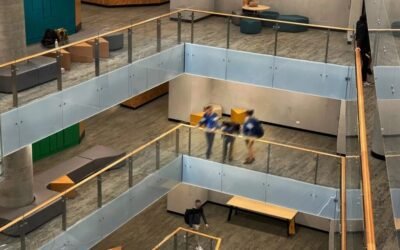By Alexandra Laki:
According to the NSW Government the current system of local councils needs an overhaul. In its $1 billion ‘Fit for the future’ initiative, the State Government plans to amalgamate 152 Sydney and regional councils into 112. These new larger councils will, as the NSW Government states, “be stronger, improve performance and deliver substantial benefits and savings to communities’’.
Looking specifically at my local council of Marrickville, there will be a merger between Marrickville, Leichhardt and Ashfield councils. This unification was unanimously agreed upon by the Mayors of all three regions, albeit under duress. Here is an overview of the current council stats in these three heavily populated areas in the Inner-West.
MARRICKVILLE COUNCIL
Servicing:
- Marrickville
- Newtown
- Camperdown
- Dulwich Hill
- Enmore
- Lewisham
- Petersham
- St Peters
- Stanmore
- Sydenham
- Tempe
A population of 86,370 largely made up of an ethnically diverse community. The 2011 Census revealed 34.1% of Marrickville’s population was born overseas and 30.7% speak a language other than English at home. These languages are predominately Vietnamese, Greek, Chinese, Arabic and Portuguese. Marrickville also has one of the highest percentages of artists and people working in creative arts industries in the country. Marrickville has 10 councillors, one Mayor and one Deputy Mayor over four wards.
LEICHHARDT COUNCIL
Servicing:
- Leichhardt
- Lilyfield
- Balmain
- Birchgrove
- Rozelle
- Annandale
Leichhardt has a population of approximately 58,140 people, with a medium income significantly higher than the national average and double the national and state averages of people who speak Italian at home. Leichhardt also has 10 councillors across four wards alongside their Mayor and Deputy Mayor.
ASHFIELD COUNCIL
Servicing:
- Ashfield
- Summer Hill
- Haberfield
- Hurlstone Park
- Ashbury
- Parts of Croydon
A population of approximately 44,500 reside in Ashfield with residents of Chinese ancestry four times the state and national averages and an Asian language spoken at home six times higher than the national average. Ashfield council has 12 councillors working alongside the Mayor and Deputy Mayor across four wards.
All three councils have a mixed representation from the Labor party, the Liberal party, the Greens and Independents.
When combined, this ‘super council’ will encompass 23 suburbs, servicing approximately 185, 990 residents within 35 square kilometres. Despite the significant increase in residents belonging within the new council, the number of elected councillors will remain at 12 taking the number of residents per councillor to 15,500. The region will again be split into four ward areas within the mega council’s area.
After four years of internal and independent research, the State Government is pursuing the plan to amalgamate local councils. In their Marrickville/Leichhardt/Ashfield merger proposal, the State Government listed the following benefits: financial benefit of $113 million over a 20 year period, projected 61% improvement in annual operating results, potentially reducing the reliance on rate increases to fund local infrastructure, greater capacity to effectively manage and reduce the infrastructure backlog across the three councils, improved strategic planning and economic development to better respond to the changing needs of the community, effective representation by a council with the required scale and capacity to meet the future needs of the community and providing a more effective voice for the area’s interests and better able to deliver on priorities in partnership with the NSW and Australian governments. Supporting this is my close friend who resides in the Marrickville suburb of Stanmore, who is a hydraulic engineer. When asked her thoughts regarding amalgamation she said working with local councils can be difficult as different councils have differing requirements for infrastructure and services. Stringent policies in one and lax processes in another can burden not only the contractors, but also council staff and residents.
The current council Mayors’ decision to merge the councils has been described by one as a decision with ‘a gun to the head’. In what could be described as a ‘bribing’ manoeuvre by the State Government, councils who voluntarily amalgamate are being offered a $25 million grant. The councils who elect not to merge will receive no funding at all and may be forcibly joined with another council regardless. This is a dangerous precedent by the State for the councils who decide that it is in the residents not to amalgamate, or for the residents themselves who believe that amalgamation will not serve their community. Both the NSW Government, councils and residents need to consider the mixed success of Queensland’s council amalgamations in 2008 where a small number of councils de-amalgamated after a few years at great cost; coerced amalgamations for the sake of the grant may cause more harm than good for the council’s future.
The council’s main opposition to amalgamation as stated on Leichhardt’s website includes: more competition for local services, an increase in rates for some residents, less visibility of expenditure, more red tape, more difficulty in communication between residents and councillors, loss of advocacy, loss of accountability and loss of local independence. Arguably less local councils mean larger State Government control on a grassroots level, eliminating the local council’s direct management and involvement in community issues on a micro scale. Less councillors also has the knock-on effect of less party members cutting their teeth in smaller scale politics, resulting in less choice for the residents to observe and elect party representatives into larger-scale government. Having adequate representation of your demographic on your local council can greatly affect your experience of belonging within your community, considering the differentials in age, life status, ethnicity, wealth and sexualities within Marrickville, Leichhardt and Ashfield municipalities. Whilst the amalgamation seems to be steamrolling ahead regardless, consideration of unifying some but not all council systems, processes and communications may be a more viable option for councils and residents. Fewer representatives with more responsibility can damage productivity, as overwhelmed and overworked councillors spread themselves and their resources too thin.
The NSW Government and local councils need to question if joining councils will really benefit residents and communities, and if so, to commit to making the new system work long into the future.
Alexandra Laki



